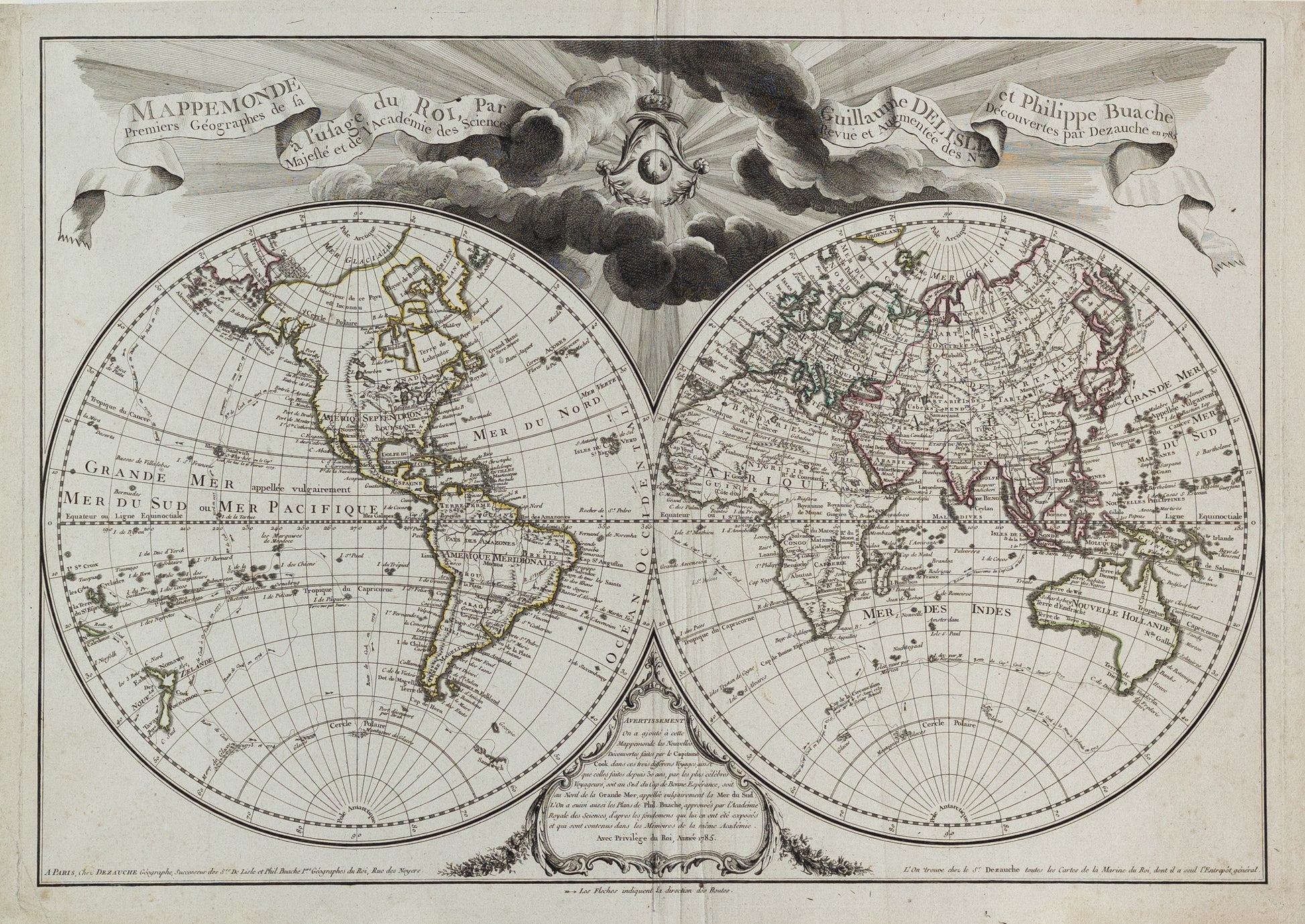from: 1016 Map Inventory
Guillaume Delisle (1675–1726) and Philippe Buache (1700–1773). Mappemonde...1780
Guillaume Delisle (1675–1726) and Philippe Buache (1700–1773). Mappemonde...1780
Couldn't load pickup availability
Guillaume Delisle (1675–1726) and Philippe Buache (1700–1773)
Mappemonde, dressée sur les observations de Mrs. de l’Academie Royale des Sciences...
Paris: Dezauche, successor to Delisle and Buache, ca. 1780
Copperplate engraving with hand coloring
[Sheet size: approx. 20 ¾ x 29 ½ inches]
A richly detailed double-hemisphere world map representing Enlightenment-era cartographic knowledge, compiled by the foremost French geographers of the 18th century, Guillaume Delisle and his son-in-law Philippe Buache. This edition was published by Jean-Claude Dezauche, who inherited the prestigious Delisle-Buache publishing house.
This Mappemonde integrates discoveries from recent European voyages—most notably in the Pacific and along the coasts of the Americas, Africa, and Asia—while preserving the refined geographical rigor of Delisle’s earlier works. Australia appears as “Nouvelle Hollande,” with an incomplete eastern coastline, and the mythical “Terre de Davis” still lingers in the South Pacific. The map emphasizes the scientific authority of the Académie Royale des Sciences and reflects France’s intellectual dominance in 18th-century geography.
Above the hemispheres, an allegorical vignette featuring clouds and rays of light centers on a cartouche bearing a globe and navigational instruments—symbols of enlightened exploration. The text and layout reflect the map’s educational purpose and its role in disseminating contemporary geographic knowledge to scholars and aristocrats alike.
Provenance: Published by Dezauche, who acquired the plates of the Delisle and Buache family after their deaths, this example reflects the continued influence of their cartographic legacy into the late 18th century.
An elegant and historically rich example of French Enlightenment cartography, suitable for collectors of scientific instruments, global history, and the intellectual legacy of French geographic exploration.


